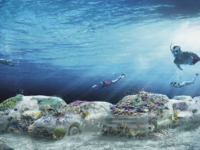The initial segment of the Reefline initiative showcases Leandro Ehrlich’s “Concrete Coral,” a creative display of 22 concrete cars destined to be enveloped by coral growth.
Courtesy of the Reefline
hide caption
toggle caption
Courtesy of the Reefline
MIAMI – Inside a local warehouse, coral enthusiast Colin Foord carefully nurtures a thriving coral nursery.
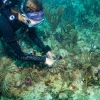
His focus is on gorgonians, a type of soft coral vital to the ecosystems of the Caribbean and Florida reefs. “These corals play a crucial role in maintaining the health of our marine habitats,” Foord explains.
Within several expansive saltwater tanks, Foord cultivates over 2,000 delicate soft coral fragments. These tanks also house snails and hermit crabs, which naturally control algae growth. The collection includes sea fans, sea whips, and other species, some destined to reach heights of up to six feet once relocated to a groundbreaking new reef project emerging off Miami Beach’s coast.
Named “Reefline,” this ambitious endeavor will create a seven-mile-long artificial reef accessible by swimmers from the shore. It combines artistic expression, ecological restoration, and a unique underwater attraction. The reef will stretch along the entire Miami Beach shoreline, composed of a series of sculptures crafted from durable marine-grade concrete.
Colin Foord meticulously cares for over 2,000 soft coral fragments in large saltwater tanks, preparing them for transplantation onto submerged concrete artworks.
Greg Allen/NPR
hide caption
toggle caption
Greg Allen/NPR
Foord’s dedication to coral cultivation merges scientific research with artistic vision. As a co-founder of “Coral Morphologic,” a collective blending art and marine biology, he documents and studies coral ecosystems.
His laboratory serves as the source for the corals destined for Reefline. Within a few years, the underwater concrete sculptures will flourish with vibrant coral colonies. “The reef will lie just 15 to 20 feet below the surface, roughly 700 feet offshore,” Foord notes. “Anyone equipped with a snorkel and fins can explore it without needing a boat.”
The Reefline concept originated from conversations between Foord and arts curator Ximena Caminos, who hails from Argentina and describes herself as a cultural placemaker. She has led initiatives that use art to rejuvenate urban areas in Buenos Aires and Miami Beach.
Now, Caminos is channeling that creative energy into an offshore ecological tourism project she humorously dubs “public housing for fish.” “We’re providing free, artistic underwater residences where marine life can thrive,” she says. “In many ways, fish need homes just like we do.”
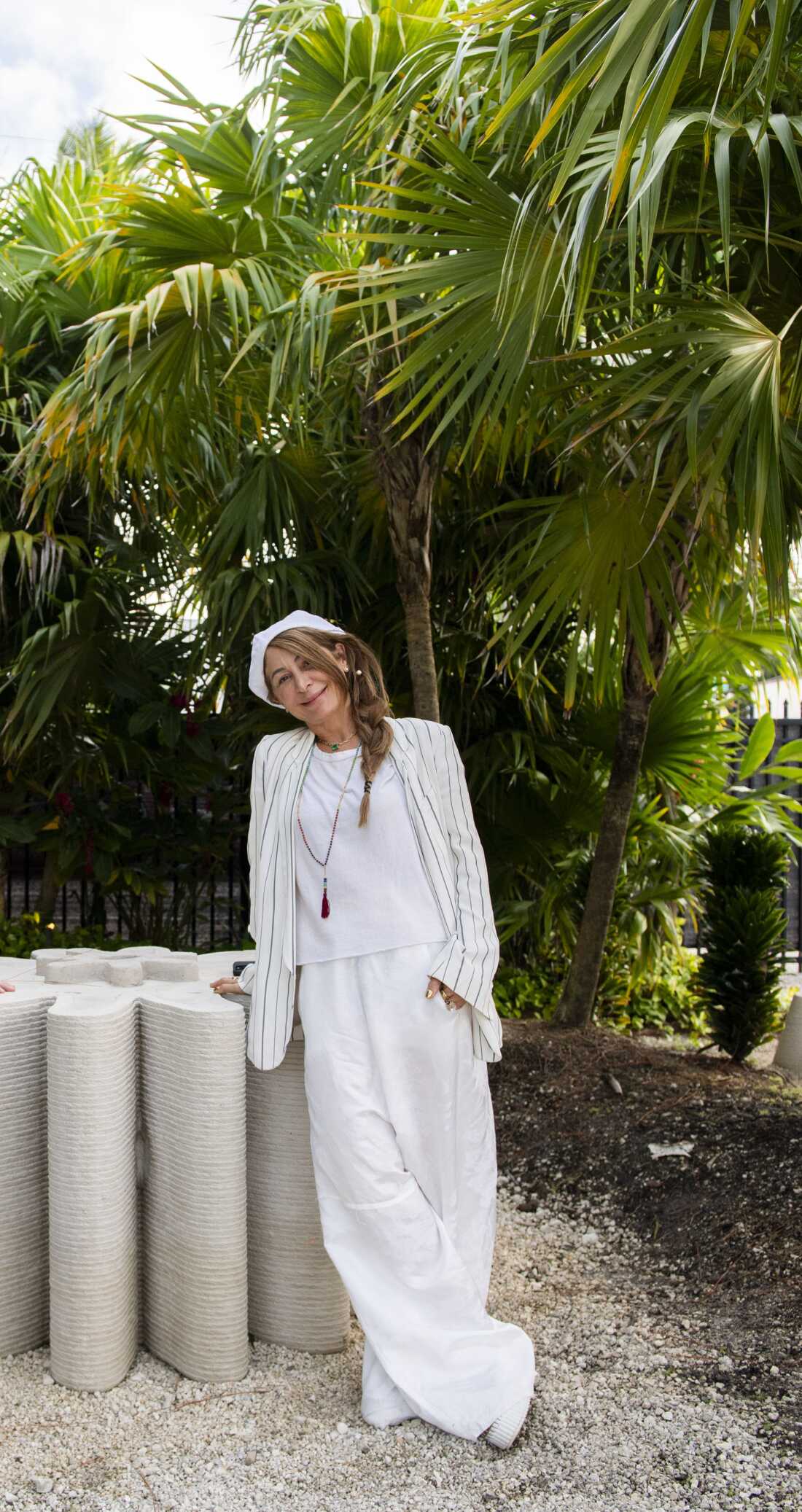
Ximena Caminos, artistic director of Reefline, embraces her role as a cultural placemaker.
Courtesy of the Reefline
hide caption
toggle caption
Courtesy of the Reefline
The city of Miami Beach supports Reefline with $5 million from a voter-approved bond, while Caminos leads efforts to secure an additional $6 million to launch the project’s first phase.
This initial phase, starting this month, features an underwater display of 22 concrete cars arranged like a submerged traffic jam. “The cars provide an ideal structure for coral attachment,” Caminos explains. “They act like natural planters for coral growth.”
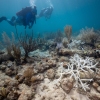
Leandro Ehrlich, an internationally acclaimed artist contributing to Reefline, envisions the cars gradually vanishing beneath flourishing coral colonies. “Over time, the coral will envelop the vehicles completely,” Ehrlich says. “This transformation is truly remarkable.”
Reefline also revives a natural feature Miami Beach lost decades ago. Until the 1970s, an offshore coral reef thrived here but was buried under sand used for beach replenishment. Foord emphasizes, “Reefline aims to restore and recreate the reef that once existed.” The project will utilize resilient coral species native to the area, capable of enduring disease and rising ocean temperatures.
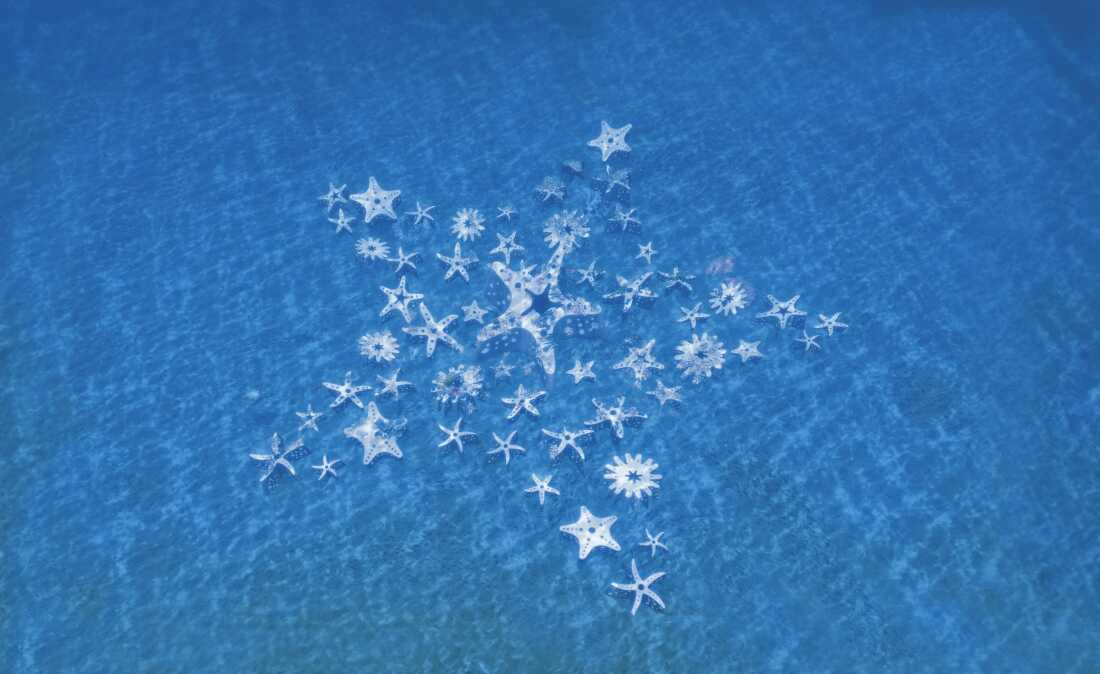
Artistic director Ximena Caminos envisions the Miami Reef Star sculpture becoming an iconic symbol for the city.
Courtesy of the Reefline
hide caption
toggle caption
Courtesy of the Reefline
Caminos projects that completing the entire seven-mile Reefline will span at least ten years. The initiative also includes plans for a coastal marine education center to raise awareness about the world’s threatened coral ecosystems. She hopes the coral-covered sculptures will be visible from airplanes approaching Miami, with the next phase featuring 57 massive starfish sculptures that could become a defining emblem of the city.



















